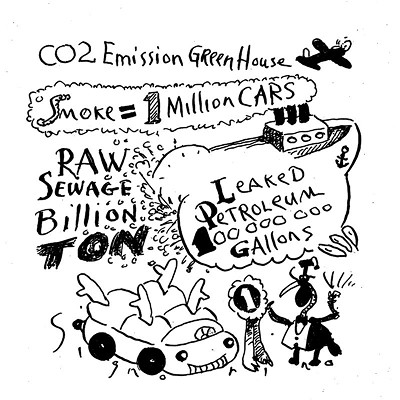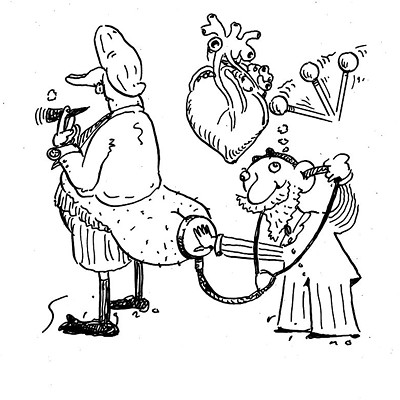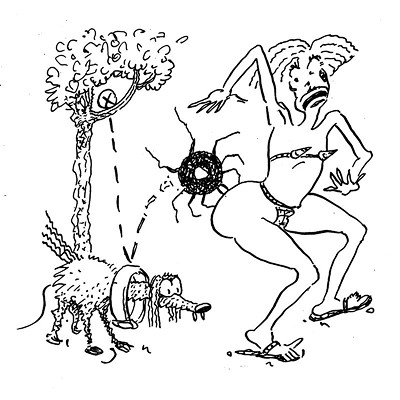On a recent drive along I-80 I was amazed at the number of wind turbines that have been added in the last couple of years. If enough wind turbines were constructed to supply a significant proportion of the Earth's electrical needs (let's say 50 percent), would this noticeably alter the weather? - Marc S. Williams
The unimaginative are now thinking: what a ridiculous question. Tell that to the editors of the journal Atmospheric Chemistry and Physics, who published a paper on the subject last year -a paper, moreover, that was in the finest Straight Dope tradition of pushing the experimental envelope.
The conclusions are a bit more technical than I'd care to present in a newspaper of general circulation, but, in layperson's language, here's the takeaway: holy $#!+.
The paper, "Weather Response to a Large Wind Turbine Array," has many fascinating aspects, which I discussed at some length with its authors, Daniel Barrie and Daniel Kirk-Davidoff.
• When these guys say "large," they're not kidding. They simulated the effects of a hypothetical wind farm covering 23 percent of the land area of North America, some 5.7 million square kilometers. It took in virtually all of the central U.S., extending in a giant swath from New Mexico to Georgia on the south and reaching all the way up through the Great Lakes to Hudson Bay in Canada. Turbine count: close to 9 million.
• The simulated turbines collectively generated almost 2.5 terawatts of imaginary electricity. To put that in perspective, total world electric power capacity right now is estimated to be around 5 terawatts. In other words, the two Dans were calculating the weather impact of extracting 50 percent of the world's electricity from the wind.
• Using a computational climate model, the two calculated that with the turbines operating normally, wind speeds within the array would drop and winds nearby might shift direction-nothing too dramatic. But if you suddenly stopped all the turbines at once, well now: you might be able to change the course of storms in the North Atlantic. In short, under the right circumstances, you could use wind turbines to mess with the weather.
That's interesting all by itself; other studies have also found significant local and global weather effects. But potential climate change is only part of the impact of large-scale wind power:
• Barrie and Kirk-Davidoff agreed their hypothetical wind farm is far larger than anything likely to be built. That's true in the sense that no one is proposing one giant turbine array. But the fantasy farm gives you an idea of the resources required to generate a substantial amount of electricity using the wind. It's estimated that meeting world energy demand (not just electricity) is going to take something like 44 terawatts of capacity in 2100. There's talk of generating 10 percent of that with wind power-4.4 terawatts.
• That's a lot of windmills. In another widely noted paper published in 2010, Chien Wang and Ron Prinn of MIT write, "Presuming these turbines are effectively generating at full capacity only 1/3 of the time, about 13 million of them are needed to meet an energy output of [4.4 terawatts], and they would occupy a continental-scale area." If they were spaced 800 meters apart, 13 million turbines would occupy more than 8 million square kilometers-roughly 5 percent of the world's total land area, equal to more than a third of North America. (I ignore offshore installations.) Cost: $45 trillion.
• Only a fraction of those turbines would be installed in the U.S.; nonetheless, we're looking at a good-sized project. The Department of Energy estimates that meeting 20 percent of the country's electricity demand with wind power in 2030 will require 300 gigawatts of generating capacity. That translates to 150,000 turbines in 46 states.
Generating an equivalent amount of electricity with fossil fuels would cause much worse environmental damage. But large-scale wind power will, at minimum, transform the landscape to an extent not seen arguably since the clearing of the virgin forest.
Sure, that worked out OK, and if in the end it just means the countryside is dotted with windmills, I guess we'll get used to it. But as Barrie and Kirk-Davidoff's little exercise demonstrates, any time you make an investment that massive, you have to wonder: what else might change?
























